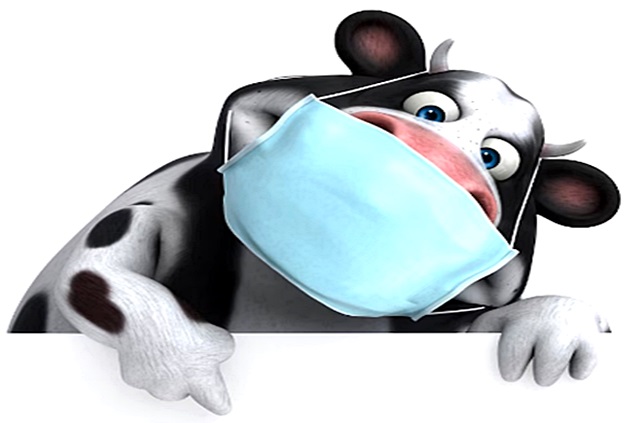1063

A new study cited by DairyReporter has found that tools such as pedometers, wearable sensors, and automatic feeders can help farmers detect subtle changes in behavior in dairy calves, predicting the onset of Bovine Respiratory Disease (BRD) and allowing for faster treatment.
Precision technologies
A group of researchers from Penn State University, the University of Kentucky, and the University of Vermont used precision technology and machine learning techniques to determine if this approach could enable timely and accurate diagnosis of Bovine Respiratory Disease (BRD), including persistence (detecting chronically sick animals) and early detection in calves that do not yet show clinical symptoms.
BRD is the primary reason for antimicrobial use in dairy calves and is responsible for nearly a quarter (22%) of calf mortality. Undetected, the disease can impact growth and milk production.
This is why the possibility of identifying the disease early could help farmers treat their calves promptly, allowing for faster recovery and minimizing any long-term effects.
While farmers typically monitor their animals for visible signs of illness, evaluating each calf for BRD signs requires labor, especially at a time when labor shortages put significant pressure on operations.
Reduced costs
Implementing low-cost precision technologies such as wearable sensors or automatic feeders can assist farmers in monitoring calf behavior without the associated labor and economic requirements, theorized the authors.
"For example, health checks require an initial investment of $11,992 to pay for the trainer and intern for about 12 weeks... and $1.83 per calf per day to conduct the checks," the authors wrote.
"In contrast, a pedometer only requires a purchase of $90 per calf and a daily maintenance cost of $0.38 per calf, while a cereal feeder requires a one-time purchase of $6,500 and a daily maintenance cost of $1.62."
Revolutionary study
The study, published in the open-access scientific journal IEEE Access, claims to have produced several industry firsts:
"the first-ever framework for early prediction of BRD persistence";
the first dataset to include precision technology, manual health exams, and ultrasound imaging to diagnose BRD; and
the dataset with the highest number of adopted precision technology devices.
For example, each calf wore a pedometer sensor, and data were collected every 15 minutes, including the number of steps and lying time.
The animals also wore RFID tags to identify when each of them approached the automatic feeder, to identify changes in appetite.
"We put leg bands on the calves, which record data on bovine activity behavior, such as the number of steps and lying time," explained lead researcher Melissa Cantor, Assistant Professor of Precision Dairy Sciences at Penn State's College of Agricultural Sciences.
"And we used automatic feeders, which distribute milk and grain and record feeding behaviors, such as the number of visits and liters of milk consumed. Information from those sources signaled when a calf's health was on the verge of declining."
Creating the dataset
The test was carried out over two years, from June 2018 to September 2019 and then from February 2020 to November 2020, with a total of 159 calves involved in the project.
The researchers adopted a machine learning model associated with a feature selection problem that "selects the best features that maximize prediction accuracy" and proposed an algorithm to test different feature subsets.
Data were collected by researchers, who physically examined the calves for signs of external disease and lung consolidation. Both automatically collected results and manually collected results were recorded and compared.
Through this framework, the researchers found that their system labeled sick and healthy calves with an 88% accuracy and correctly identified 70% of calves four days before they were diagnosed with the disease. Additionally, 80% of calves that developed chronic BRD were detected within the first five days of the disease.
Truly surprised
"As far as we know, this is the first work to study BRD persistence status through cost-effective machine learning techniques and the first study to publish such a comprehensive dataset, which includes ultrasonography along with health exams and offers the highest number of precision technologies," the authors concluded.
Cantor said: "We were truly surprised to find that the relationship with behavior changes in those animals was very different from animals that improved with a single treatment. And no one had ever looked at that before.
"We came up with the concept that if these animals behave differently, then there is likely a chance that IoT technologies empowered with machine learning inference could identify them earlier before anyone can do it with the naked eye and that it provides producers options."
(Source: ”A Machine Learning and Optimization Framework for the Early Diagnosis of Bovine Respiratory Disease”-Cantor, C. M., et al Published: 20 June 2023 DOI: 10.1109/ACCESS.2023.3291348)





